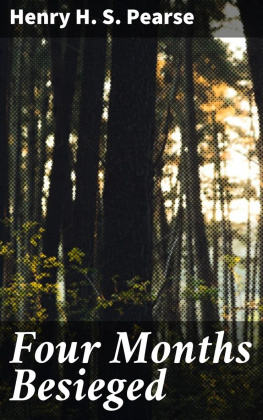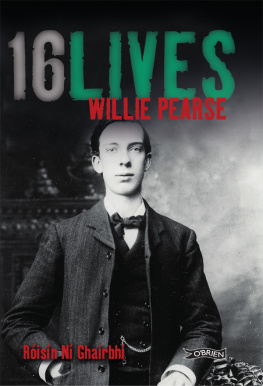PREFACE
Table of Contents
The siege of Ladysmith will long remain in the memories of the age. The annals of war furnish the record of many fierce struggles, in which men and women have undergone sufferings more terrible and possibly shown a devotion rising to sublimer heights. But the Boer War of 18991900 will mark an epoch, and throughout its opening stage of four months the minds of men, and the hopes and fears of the whole British race, centred upon the little town in mid-Natal where Sir George White with his army maintained a valiant resistance against a strenuous and determined foe without, and disease and hunger and death within, until, to use his own words, that slow-moving giant John Bull should pass from his slumber and bestir himself to take back his own. For that reason alone the story of Ladysmith will remain memorable. But it is a story which is brilliant in brave deeds, which tells of danger boldly faced, of noble self-sacrifice to duty, in calm endurance of many and growing evilsa story worth the telling. Yet so far it has been told only in the necessarily disjointed telegrams and letters of the press correspondents in the town. Native runners who were captured and otherwise went astray, and the ruthless pencil of the censor, were accountable for many gaps. Two or three of the letters contained in the following pages escaped these perils, and were published in the columns of the Daily News. The rest of the book now appears for the first time.
The volume consists of pages from the letters and diaries of Mr. Henry H.S. Pearse, the Special Correspondent of the Daily News. Mr. Pearse was in Natal when the war broke out, and he was in Ladysmith during the whole of the siege. He was fortunate enough to enjoy good health throughout, and though he had some narrow escapes he was never hit. His letters contain a complete story of the siege.
April 1900.
CHAPTER I
Table of Contents
INTRODUCTORY
Table of Contents
The declaration of warSir George White and the defence of NatalThe force at GlencoeBattle of Talana HillGeneral Yule's retirementBattle of ElandslaagteUseless victoriesEnemy's continued advance.
Before taking up the history of the siege proper it will be well here to pass briefly in review the events which led up to the isolation and investment of Ladysmith. When war was declared by the Government of the Transvaal in its despatch of the 9th October 1899, it found Her Majesty's Government in very great measure unprepared. A month earlier, however, reinforcements of 10,000 troops had been ordered to Natal from India and elsewhere, and the major part of these were already in the Colony. General Sir George White, who had arrived at Durban on 7th October, had strongly advocated the abandonment of the northern district of Natal, but allowed himself to be overborne by the urgent representations of Sir W.F. Hely-Hutchinson, who believed the withdrawal would involve grave political results. Sir William Penn Symons believed that the districts in question could be defended by a comparatively small force, and he was allowed to make the experiment. At that time there were with him at Glencoe three battalions of infantry, a brigade division of the Royal Artillery, the 18th Hussars, and a small body of mounted infantry. The enemy crossed the borders immediately upon the expiry of the term stipulated in the ultimatum, and on the 20th October was fought the battle of Talana Hill.
This first battle of the campaign demonstrated at once the soundness of Sir George White's views. General Symons's little army worthily maintained the military traditions of their race, and in the face of a terrible fire from modern rifles, in the hands of the stubbornest of foes, rushed the enemy's position and swept him from the heights. But victory demanded heavy toll. The gallant commander nobly expiated the mistaken judgment which had led him so seriously to underrate the strength of the invaders, and nearly forty officers killed, wounded, and taken prisoners, figured on a list of about 430 casualties. So heavy a price was paid for a brief success and the knowledge that the enemy was too strong to make it safe to hold the Glencoe position longer.
General Yule, who now took command of the column, abandoned his camp on the 22nd October, and withdrew by a circuitous route to Ladysmith, which was reached on the 26th. In the meantime, however, on the 21st, the Boers marched from the north-west, having cut the railway and captured a train of supplies at Elandslaagte to the north of Ladysmith. Sir George White therefore ordered out a force, under General French, to clear them from the line and to restore communication. Here again the hostile positions were stormed with reckless gallantry, and the Boers were swept back in headlong flight, suffering heavy losses. But again our loss, especially in officers, was very serious, and again it soon became apparent that victory, quite apart from the price of it, had not improved our position. The Boers, thrust back for the moment at one point, steadily continued their advance. General White's force was again engaged on the 24th October, when, in order to prevent the enemy crossing the Newcastle road from west to east, and falling on the flank of General Yule's retiring column, an attack was made in force upon the enemy at Rietfontein, near Elandslaagte, and the Boers, after six hours' fighting, were driven from the hills.
The object aimed at was thus secured. Whether, had the effort been pushed home, a definite check might at this stage have been imposed upon the Boer advance, is doubtful. Stopping where it did, it did not prevent the steady and unceasing movements of the enemy to surround Ladysmith. One more fight and they were to circle the town in a ring of metal which was long to withstand all the blows that could be levelled against it. The battle of Lombard's Kop, or Farquhar's Farm, as it is officially styled, ended in disaster to the British arms, and drew tight the threads in the entanglement of Ladysmith. The evil fortunes of the day were described vividly by Mr. Pearse in a letter written on the following day.
CHAPTER II
Table of Contents
LOMBARD'S KOP AND NICHOLSON'S NEK
Table of Contents
General White forced to fightThe order of battleLeviathanThe Boers reinforcedA retrograde movementHow Marsden met his deathNaval guns in actionA night of disasterWho showed the white flag?A truce declaredA humiliating position.
October 31.If the action on Rietfontein, or Pepworth's Farm ridges, a week ago was the great score for us that official reports represent, in that it checkmated all possible efforts of the Boers to intercept Brigadier-General Yule's column on its march from Dundee, there can be no doubt that the tables were turned upon us effectually yesterday. Not only did our attempt to beat one of the enemy's columns in detail, and capture the heavy Creusot guns that had been harassing us, fail through misdirection, but when attacked in turn by Boer reinforcements, our troops were untimely ordered to abandon a position that they had held for four hours without serious loss, and this gave moral, if not material victory to the enemy. Successful in every fight up to that point, we are now in the humiliating position of finding ourselves practically invested by a Boer force that will not attack except by artillery fire at long range, and whose leader has the power temporarily, at any rate, to choose the fighting ground that suits Boer tactics best if we decide to take the offensive. Not only so, but our little army here has suffered a great disaster in the loss of two gallant regiments, one of which had only ten days earlier gained for itself proud distinction by being first to crown the heights of Talana, near Dundee, where British infantry proved worthy of its most glorious traditions. As a purely defensive measure, if nothing more, the fight of yesterday was forced upon us. Like some other operations in this brief but eventful campaign, it came too late, but, whether timely or not, a battle was inevitable unless we meant to sit down tamely and be battered at.










